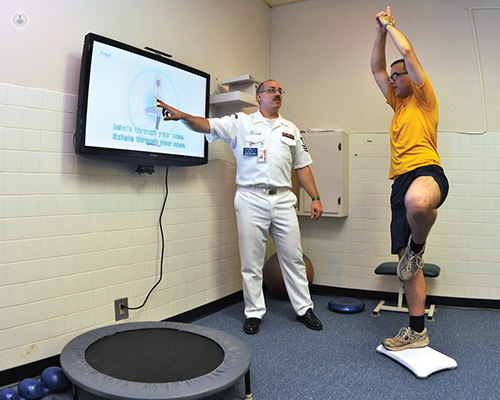

Telerehabilitation is a form of telehealth that allows the remote delivery of rehabilitation services to the home, or place of choice of the patient. Telerehabilitation uses different forms of telecommunication technology, such as videos, websites, and computer programmes to guide the patient in the type of rehabilitation needed. Equipment may also be provided by the hospital or doctor that the patient can use at home.

What is telerehabilitation?
Telerehabilitation involves the doctor setting a number of objectives for the patient, such as physical movements, exercise, or mental exercises using a range of devices, programmes and computer applications to guide the patient. The applications will often feature two-way interactive videos that allows the doctor to monitor the health and development of the patient.
It is particularly useful for patients who have difficulty travelling to hospitals or clinics to undergo rehabilitation, due to living in rural places, or not being well enough to travel.
Telerehabilitation allows patients to be in control of their own recovery and management of their medical needs where appropriate. This enables a more personalised care approach for the doctor, as the rehabilitation will be created specifically for the patients, their needs and their capabilities.
What conditions is telerehabilitation used for?
Telerehabilitation is a wide-ranging method of providing rehabilitation to patients of many conditions. It is most often used for the provision of physical rehabilitation to patients who have suffered stroke, spinal cord injury, traumatic brain injury, multiple sclerosis, among others.
Other forms of telerehabilitation, not only physical, include speech and language therapy, audiology, and neurophysiology.
A wide variety of assessments can be provided using telehealth. Remote monitoring systems can be applied to check the status of patients, and even in some cases robotic and virtual reality technologies have been used.
The future of telerehabilitation
As technology continues to improve, so may the application of telerehabilitation as the benefits are understood more, and the processes are improved. There is a continued move towards providing care at the patient’s home, and at their convenience, and as other businesses move in this direction, it is natural that medicine and rehabilitation will do the same.
